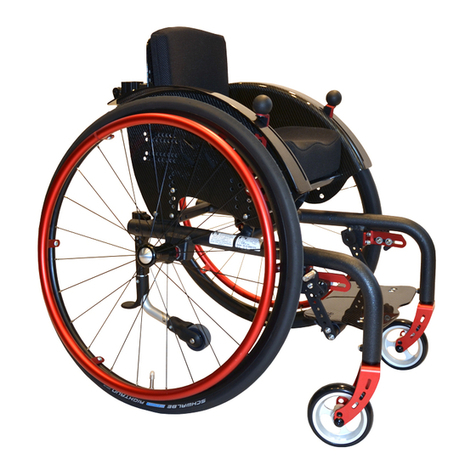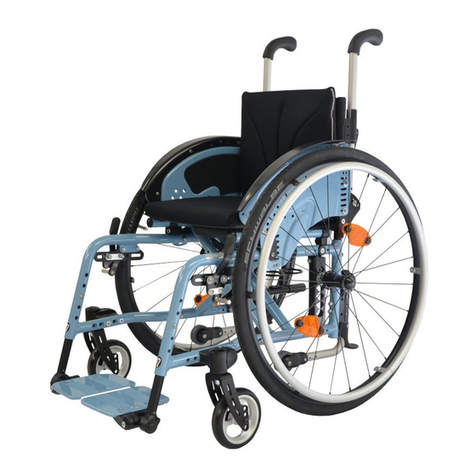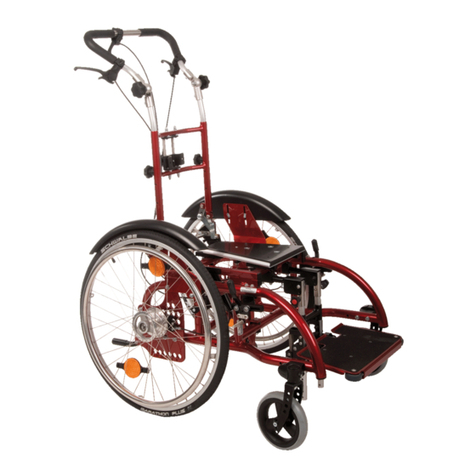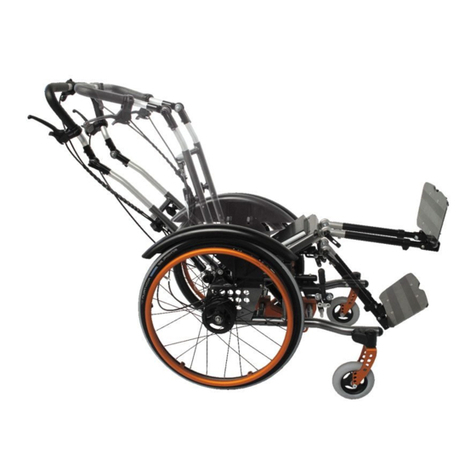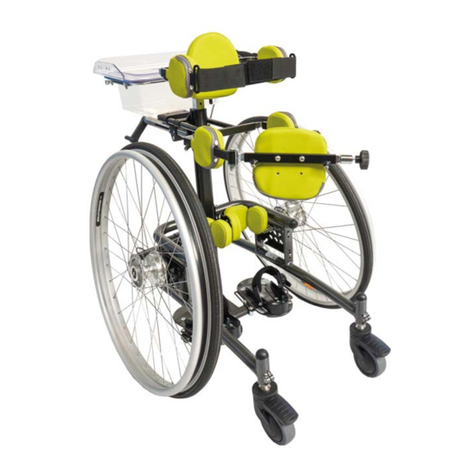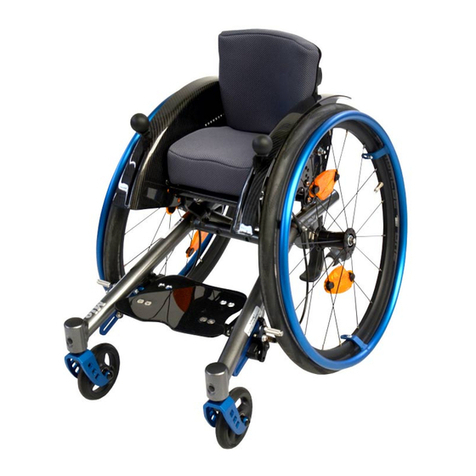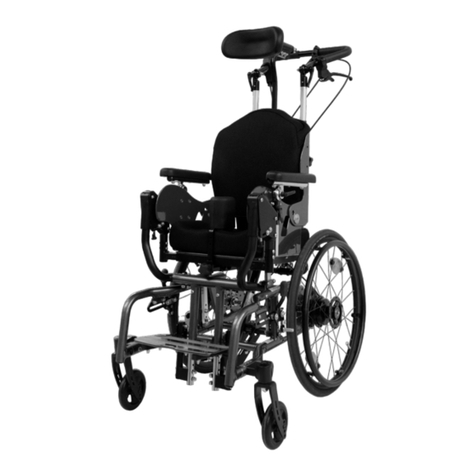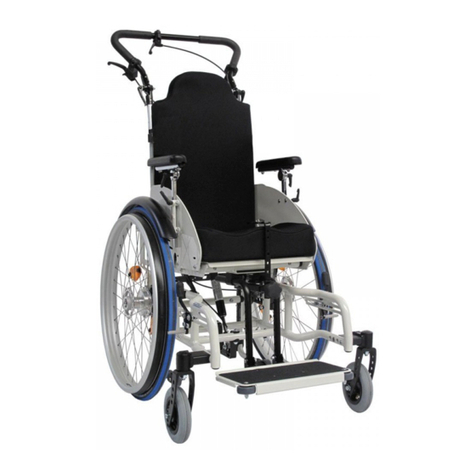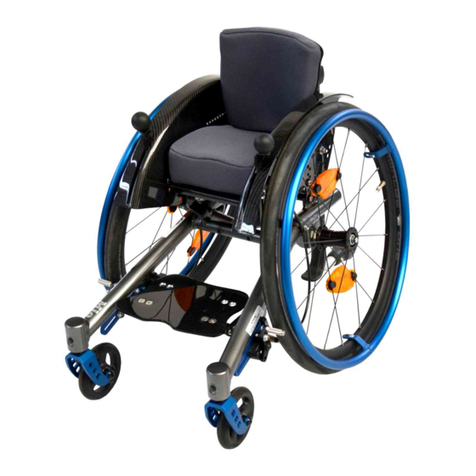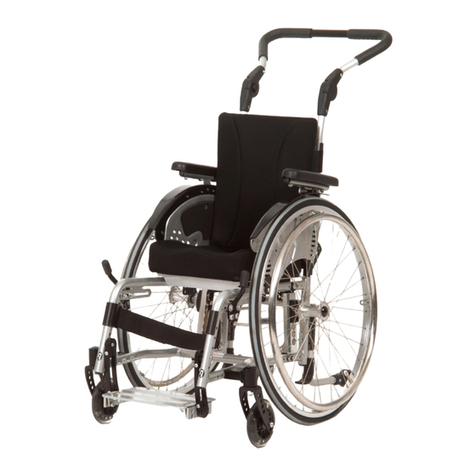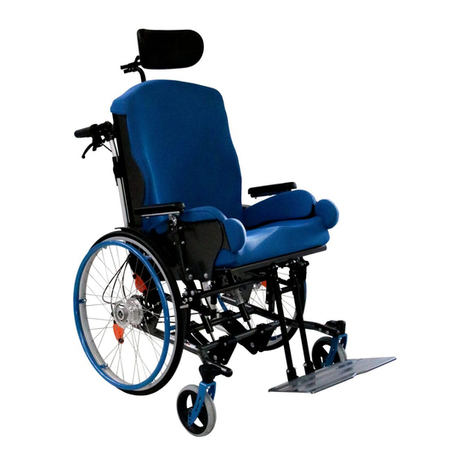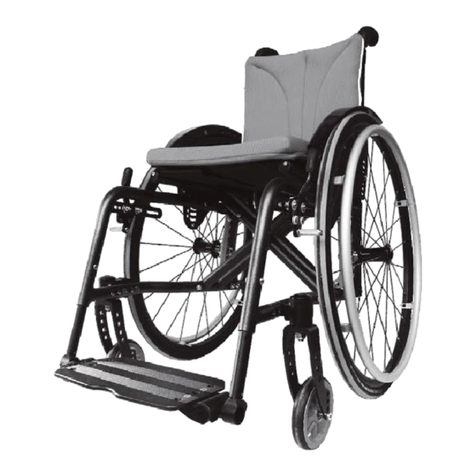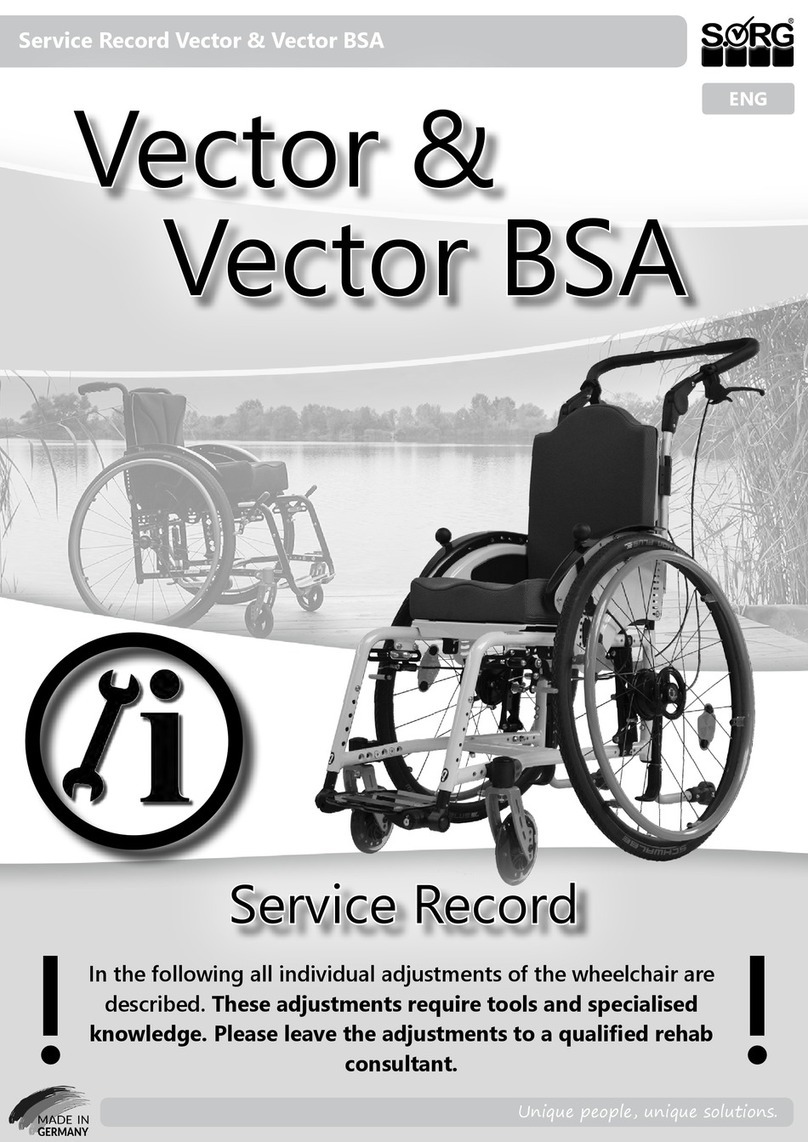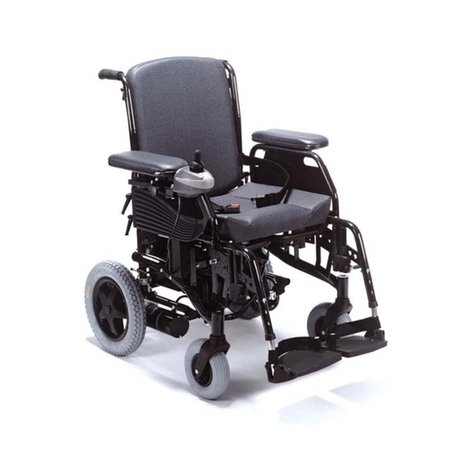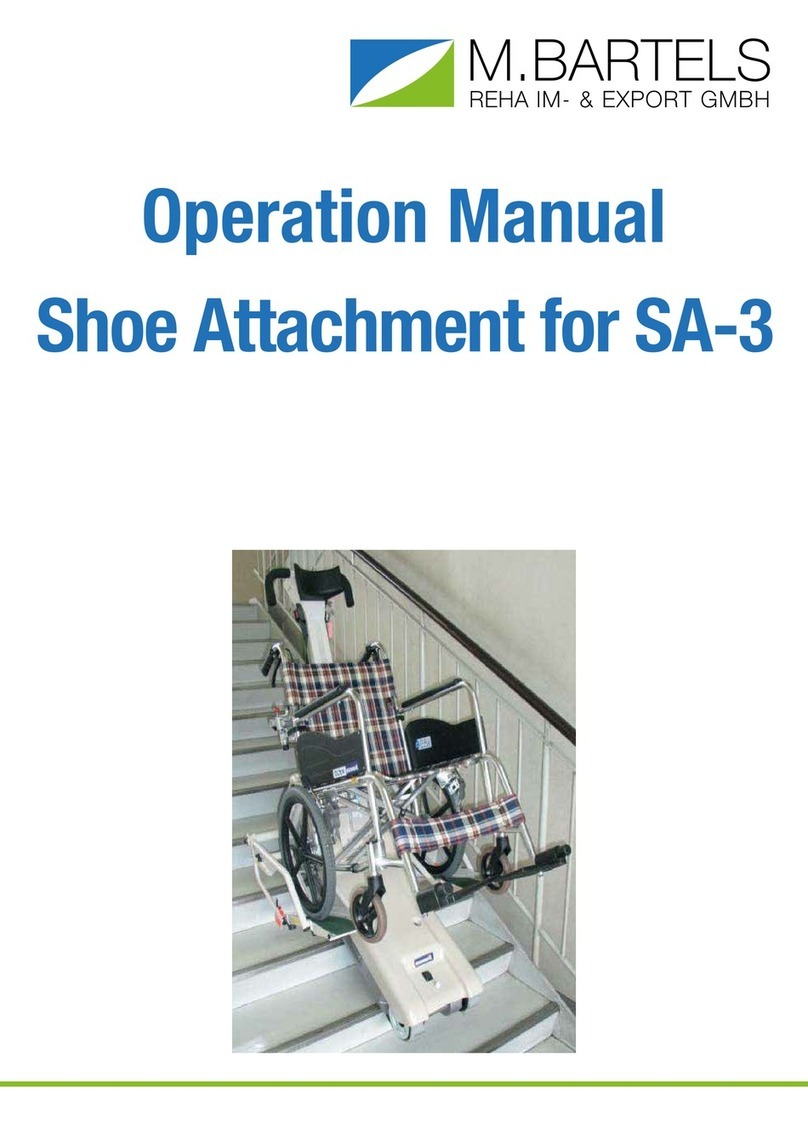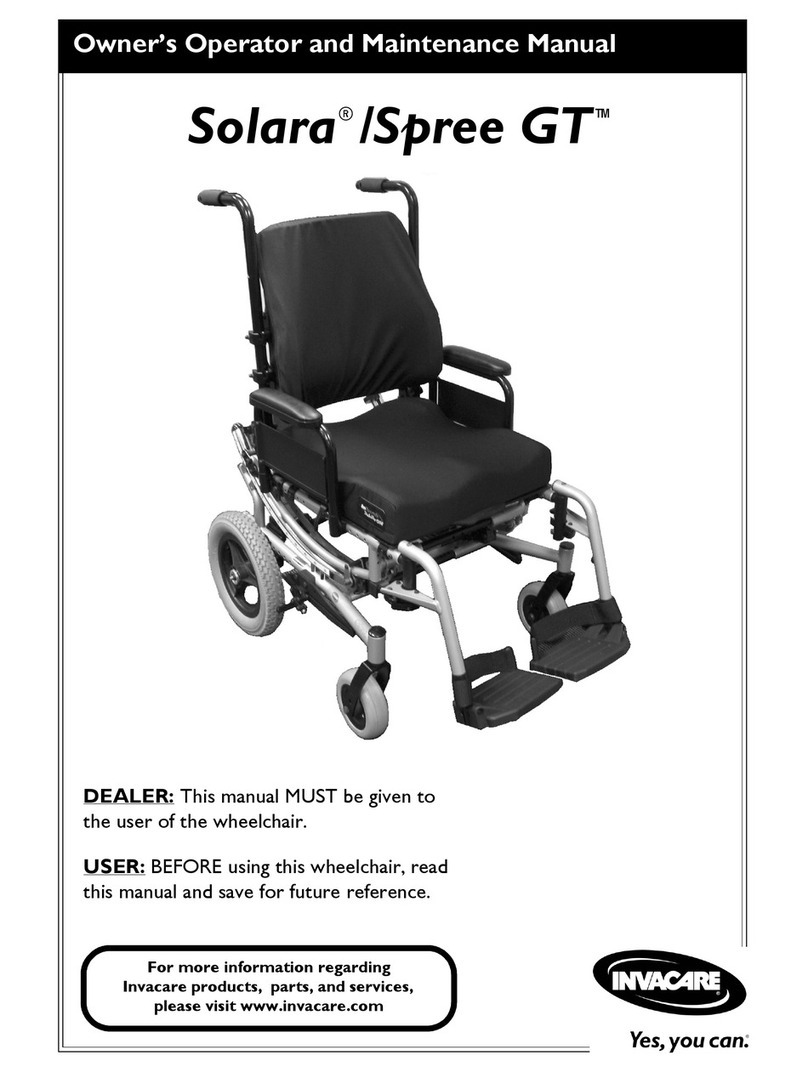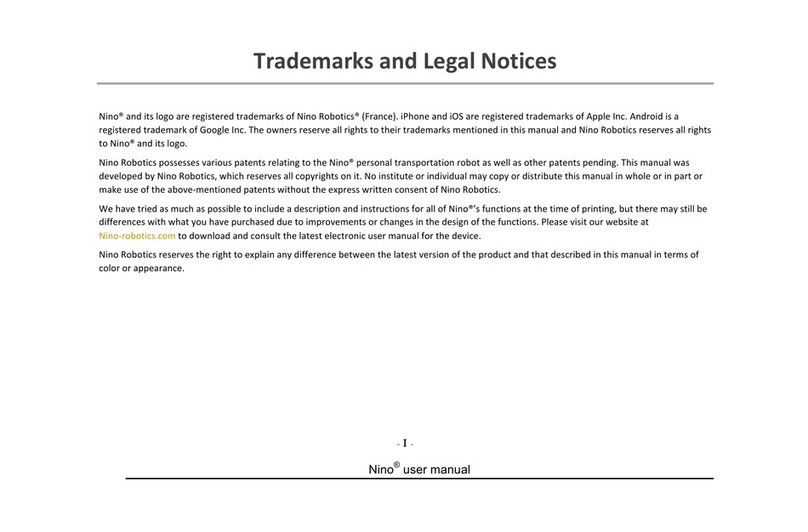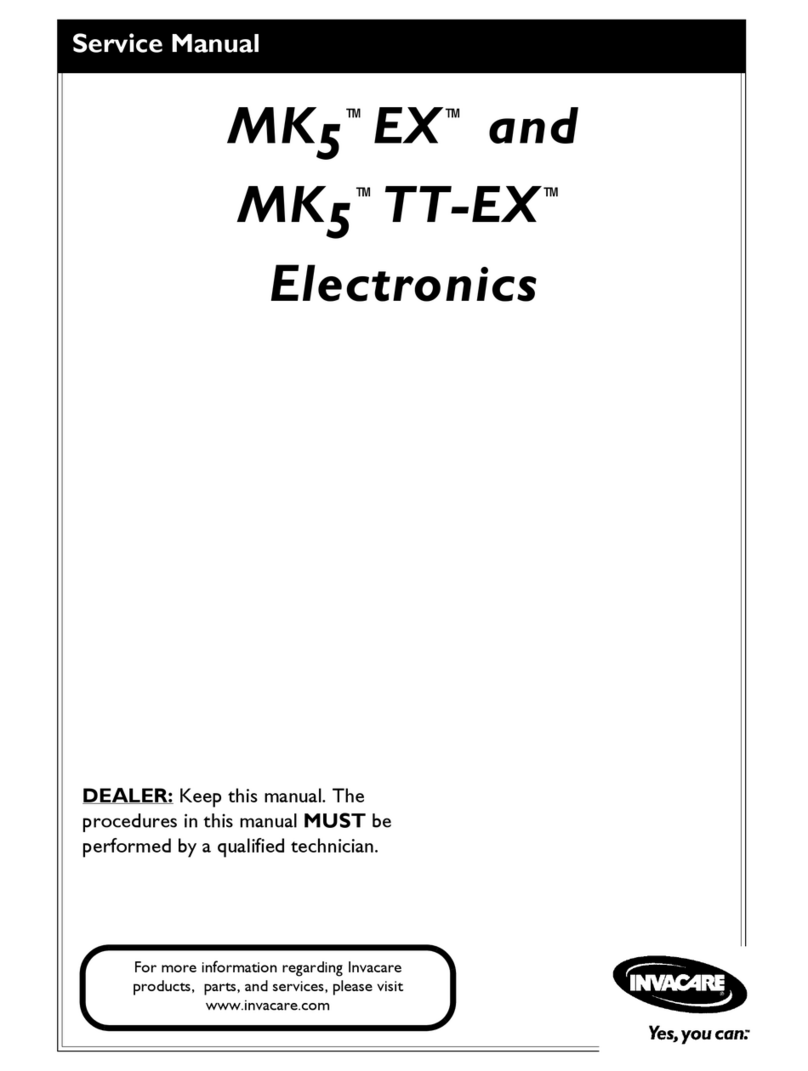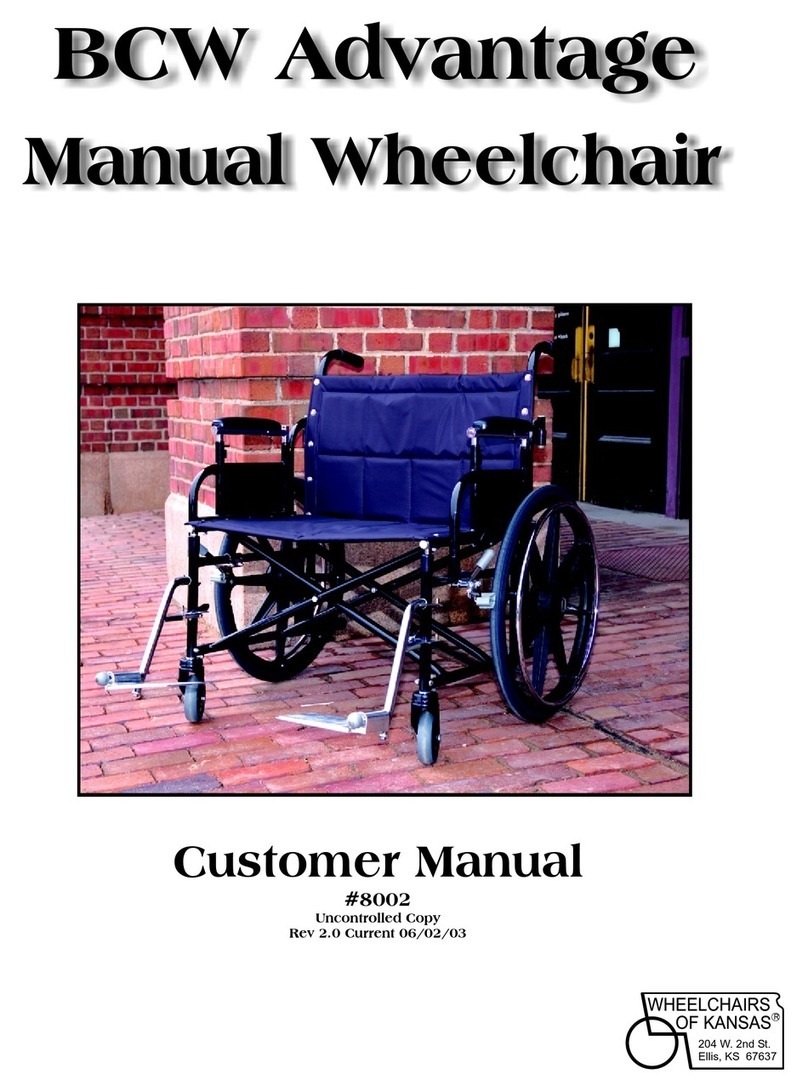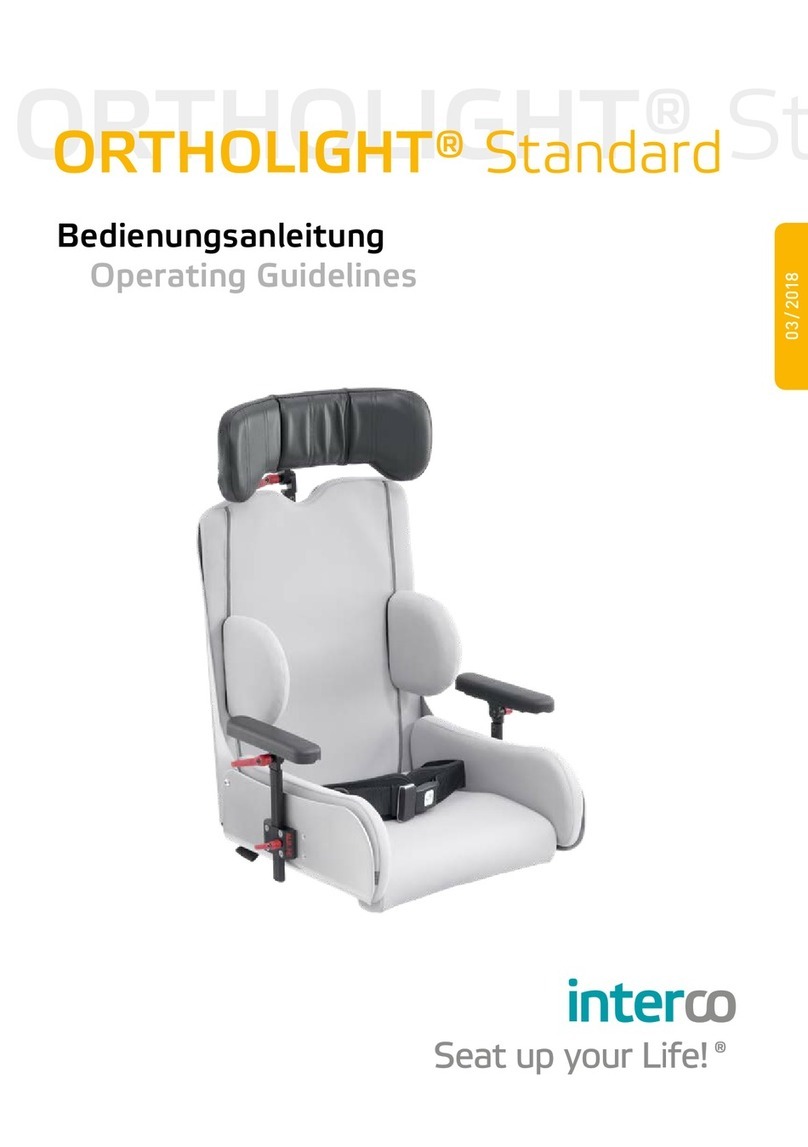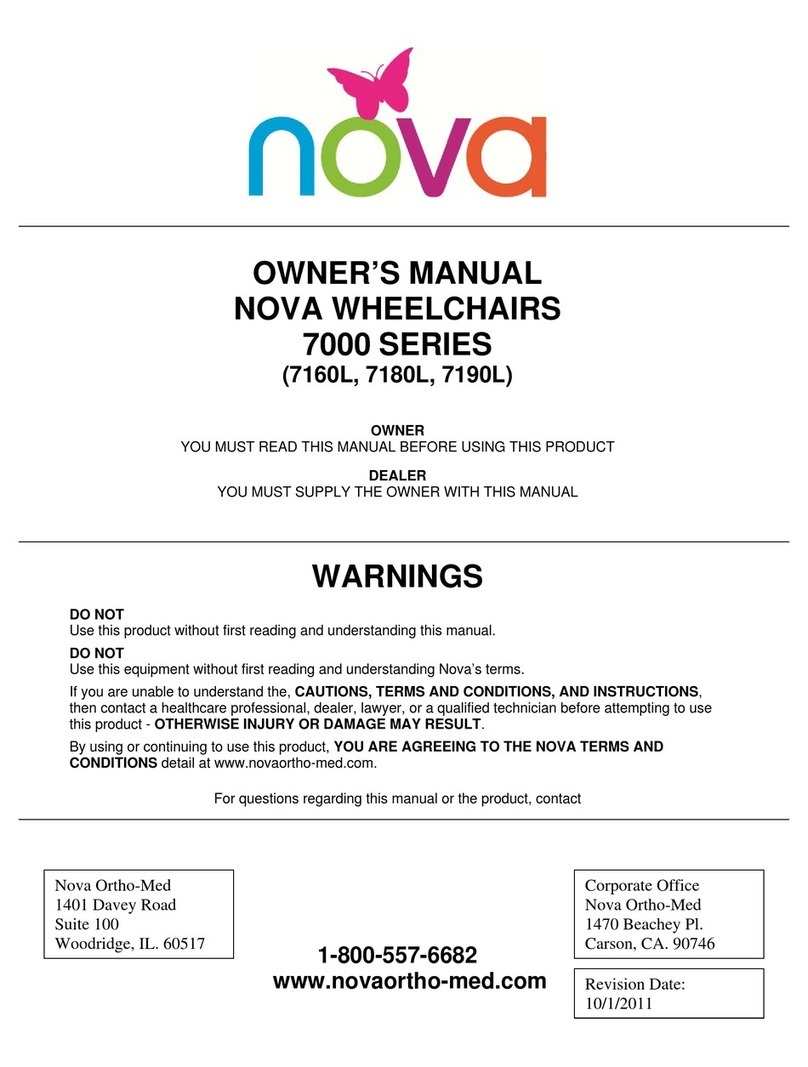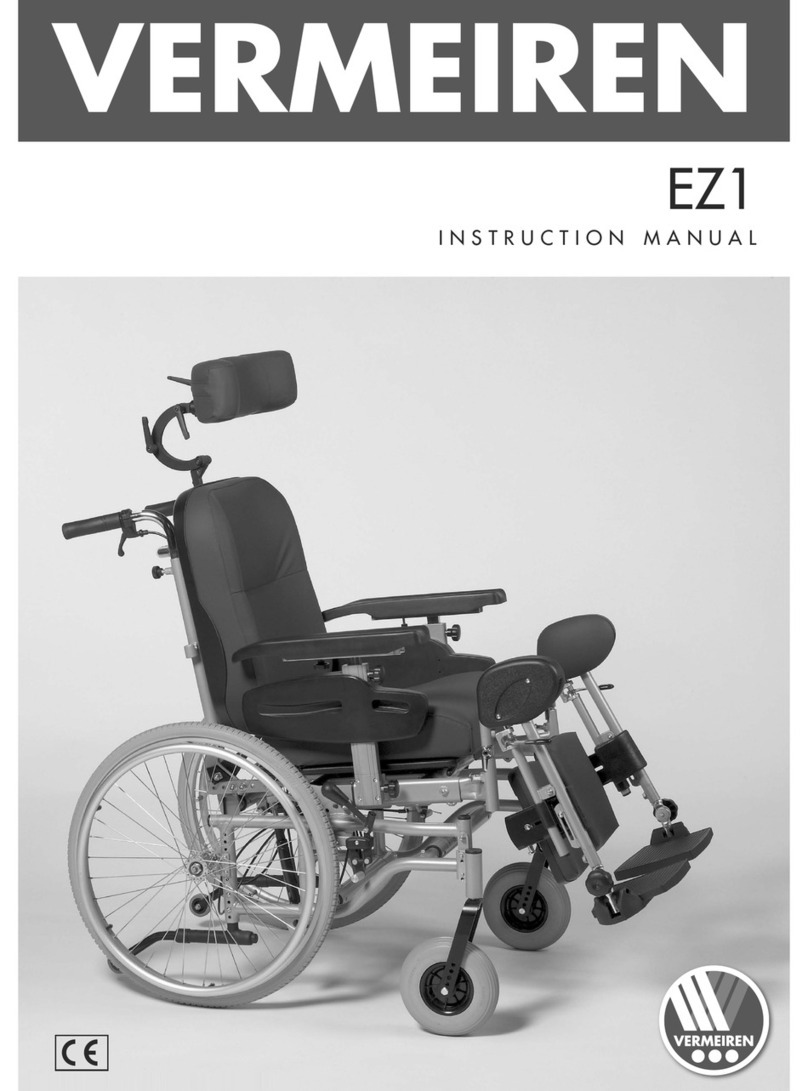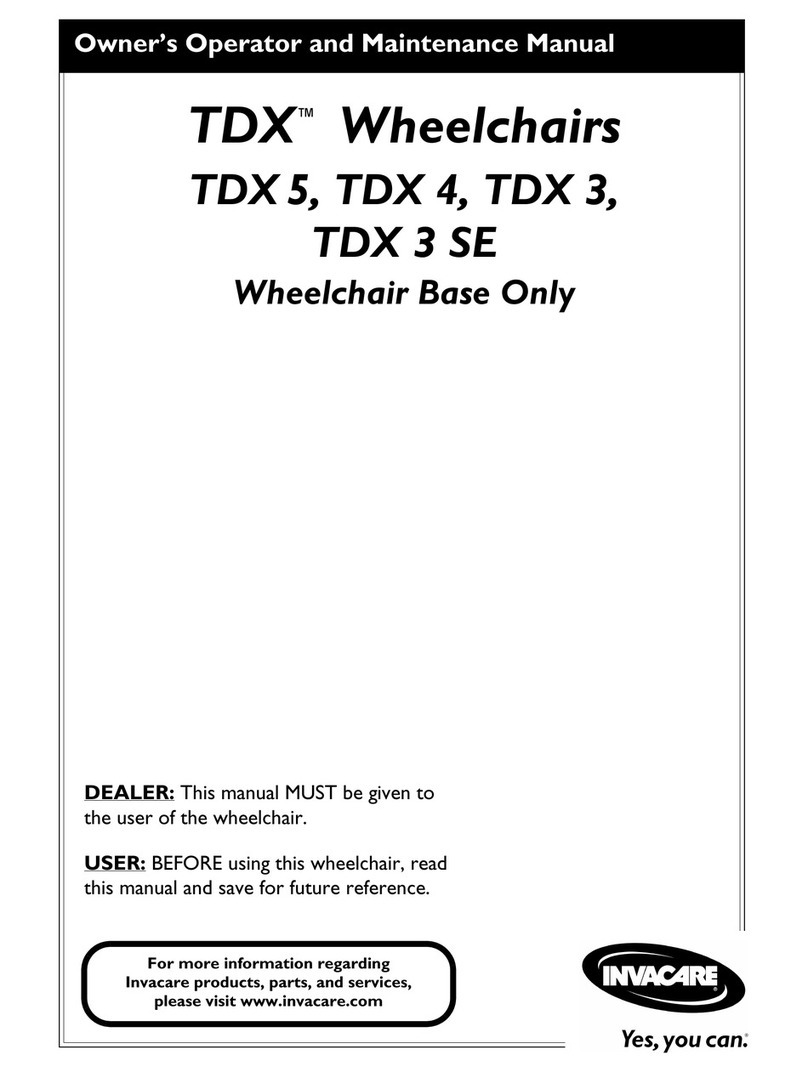
service record
5
wheelchair IMMEDIATELY after receiving it and IN THE
PRESENCE of the deliverer (forwarding company) for
possible damages that may have occurred during trans-
portation.
CONFIRMATION OF RECEIPT
�INDICATION
Only sign the conrmation receipt after you have thor-
oughly checked the wheelchair for defects.
�INDICATION
In case of damages, note on the conrmation receipt
that you have received a damaged wheelchair.
TRANSPORTATION DAMAGES
In case of damages, please proceed as follows:
• write a short record of the damage and review of
events, if possible include pictures clearly show-
ing the damage,
• get the personal information of the bearer (driver’s
license etc.),
• inform us immediately.
�INDICATION
According to the valid law, damages reported late can
neither be asserted to us nor to the forwarding company.
1.4 SERVICE AND MAINTENANCE
READ
According to § 33 subparagraph 1, clause 4, [German]
SGB V, the responsibility of maintenance, repairs and
replacement lies with the benefactor. After agreement
with your benefactor, be sure to have all safety relevant
inspections, maintenance work and if necessary repairs
conducted in order to make the wheelchair functional.
ATTENTION
Only original parts are to be used for all service and main-
tenance work.
INFORMATION
Proceed according to the maintenance plan in the user man-
ual.
1.5 DOCUMENTATION
�INDICATION
Keep this service record in a safe place. Have all work/re-
pairs done on your wheelchair documented by the medical
supply store in the maintenance plan. If applicable, hand
it back to your benefactor along with the wheelchair.
�INDICATION
In the event of the wheelchair being reused, the service
book is an important source of information for you bene-
factor. It provides evidence of regular inspections which
might be relevant in the event of warranty claim.
1.6 ACCESSORY AND ATTACHMENT DRIVES
ATTENTION
The addition of these accessory and attachment drives is
done by either the manufacturer or the sanitary house and
solely in their responsibility.
1.7 ADJUSTMENTS ON THE WHEELCHAIR
ATTENTION: DANGER OF BRUISING
When operating the adjustable parts (back rest, side
guard, leg support, wheel lock, positioning aids etc.) as
well as xation and reparation work, there is an injury risk
or of crushing body parts in the pivoting range.
ATTENTION
All wheelchairs are to be handled with care. Removable
parts are not to be thrown or dropped!
ATTENTION
Before repairs or adjustments are made, clean/disinfect
the wheelchair and secure it from tipping over and/or fall-
ing down.
ATTENTION
Only use original spare parts.
ATTENTION
Safety nuts are only to be used once. After rst removal
the safety nut must be replaced by a new one.
1.8 TIGHTENING TORQUE AND TOOLS
INFORMATION
Technical changes reserved.
Screws
• M5: 5 Nm;
• M6: 7 Nm;
• M6: (axle plate) 10 Nm,
• M8: 20 Nm;
• M10 (Nut): 25Nm (caster)
• Fitting of quick-release axle: 35Nm
Tools needed:
• torque wrench (5-50 Nm)
• open end wrench
• ex ratchet handle with socket wrench inserts
• hexagon screwdriver
• Phillips screwdriver
• at head screwdriver
• plastic mallet
• side cutter
• threadlocker (uid)
• bicycle inner tube repair kit
• work bench/jaw vise with rubber pads
1.9 WORD EXPLANATION
Loosen screw:
means to only loosen the screw so that the parts are still
held together but (e.g.) can be moved around along a slot-
ted hole.
Remove screw:
means to completely remove the screw from where it was
attached so that the parts are no longer connected.
